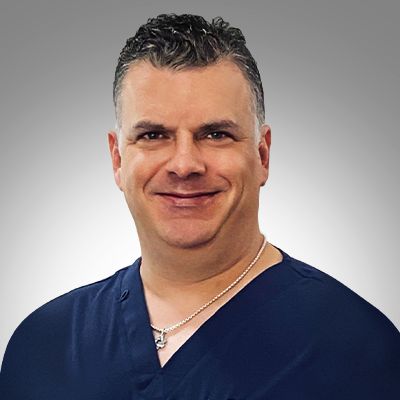News
Article
Real-world data from frontline physicians can help identify the next emerging pandemic
Author(s):
A multi-pronged approach is needed to stop the next global health threat, and doctors play a vital role
Dr. Auren Weinberg: ©Veradigm

As the world continues to grapple with the impacts of COVID-19, medical providers and public health officials must also look ahead to bolster preparations for the next global outbreak. Real-world data captured by providers on the frontlines can serve as a vital resource for identifying emerging health threats and driving the research to combat them.
The recent COVID-19 pandemic has highlighted the critical importance of real-time visibility within the health care system. While much criticism has been aimed at the ineffective rollout of testing as one of the biggest U.S. failings in combatting COVID-19, there is a plethora of other data that can provide crucial insights into the spread of the virus. To tackle any future potential global health crisis more effectively, there is a pressing need to improve data collection, sharing, and analysis to rapidly identify symptoms, develop effective treatments and quickly halt the spread of the virus.
A three-pronged approach
One of the key strategies in getting ahead of a potential pandemic is to expand syndromic surveillance networks. These networks track symptoms and early indicators of disease in real time before specific diagnoses are confirmed. Expanding these networks nationally and globally can help detect unusual clusters of respiratory illness, fever, or other concerning symptoms that might signal an emerging outbreak. Engaging a broad base of providers to contribute timely data is essential to this effort.
These contributions would remain useless, however, without an improvement in data interoperability. Seamless data sharing across provider systems and public health agencies is critical for assembling a clear picture of emerging outbreaks. Providers should capture structured, standards-based data in electronic health records and use health information exchanges to enable responsible data sharing at the local, national, and global levels.
The final step is the development of robust predictive analytic models. Advanced analytic tools can scan syndromic data in near real time to identify anomalous trends and predict emerging outbreaks. As more real-world data becomes available, machine learning models can be developed, validated, and refined to enable reliable predictive surveillance.
While potentially profitable use cases can drive Big Data analytic projects, providers should remember that capturing and sharing data to support public health surveillance has inherent value, even if it possibly lacks commercial potential. Public health organizations rely heavily on the voluntary participation and altruistic sharing of data from providers across the entire health care ecosystem to mount a rapid, coordinated response to new threats. Without comprehensive real world data capture and sharing by providers on the frontlines, our public health surveillance and response capabilities would be significantly impaired.
An invaluable service
Providers contribute an invaluable service by diligently documenting patient encounters, testing results, symptoms and other vital data that would otherwise go unseen. This real-world evidence fuels public health efforts to connect dots across disparate regions, identify trends, model disease spread and guide interventions to contain outbreaks. Though it may not boost the bottom line, providers’ commitment to capturing accurate, shareable data and reporting it promptly serves the greater good by empowering public health agencies to keep our communities safe in the face of emerging threats from infectious diseases.
Technology and artificial intelligence hold tremendous potential to unlock insights from real world data that can point to emerging outbreaks, identify effective treatments, predict spread and guide response efforts. Crowdsourced symptom tracking apps provided early warning signs of COVID-19 community spread. New AI tools can scan social media posts to pick up chatter about unusual patterns of symptoms when people are afraid to engage the healthcare system. As methods evolve, responsible use of technology and data sharing will enable smarter, faster responses.
Convening diverse, real world data providers to work collaboratively on public health research can help overcome barriers. For example, as the pandemic reached the U.S., the nonprofit research organization MITRE brought together leading companies, researchers and practitioners in the health care community to help coordinate the nation’s response to COVID-19. The effort analyzed claims data from major insurers with clinical data from providers, allowing researchers to link symptoms with downstream health care utilization to understand the full scope of COVID’s impacts. Such collaborative initiatives demonstrate the power of multidisciplinary partnerships in leveraging data to address pressing public health challenges.
As daunting as future pandemics might seem, the COVID-19 crisis strengthened global resolve to proactively leverage all available tools and resources to counter health threats. Real world data from providers serves as the solid foundation to gain insights into emerging diseases, identify risk factors, develop predictive models, guide interventions, and ultimately safeguard global health security. Capturing quality data and responsibly harnessing its power will help ensure the world faces the next outbreak informed, prepared, and equipped to respond swiftly and effectively.
Auren Weinberg, MD, MBA, is Chief Medical Officer of Veradigm, an integrated data systems and services company that combines data driven clinical insights with actionable tools to help health care stakeholders improve the quality, efficiency, and value of health care delivery. He co-founded an Independent Physicians Association which focused on supporting privately owned practices in achieving the quadruple aim of better outcomes, better care, lower cost, and higher staff satisfaction. He received a BS in Chemistry at Haverford College, his MD with Honor from the University of Rochester School of Medicine, and an MBA with Dean's Certificate of Excellence from Temple University Fox School of Business.





